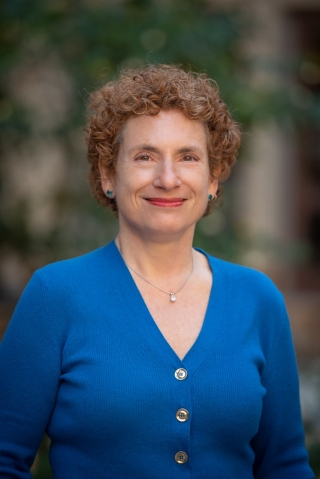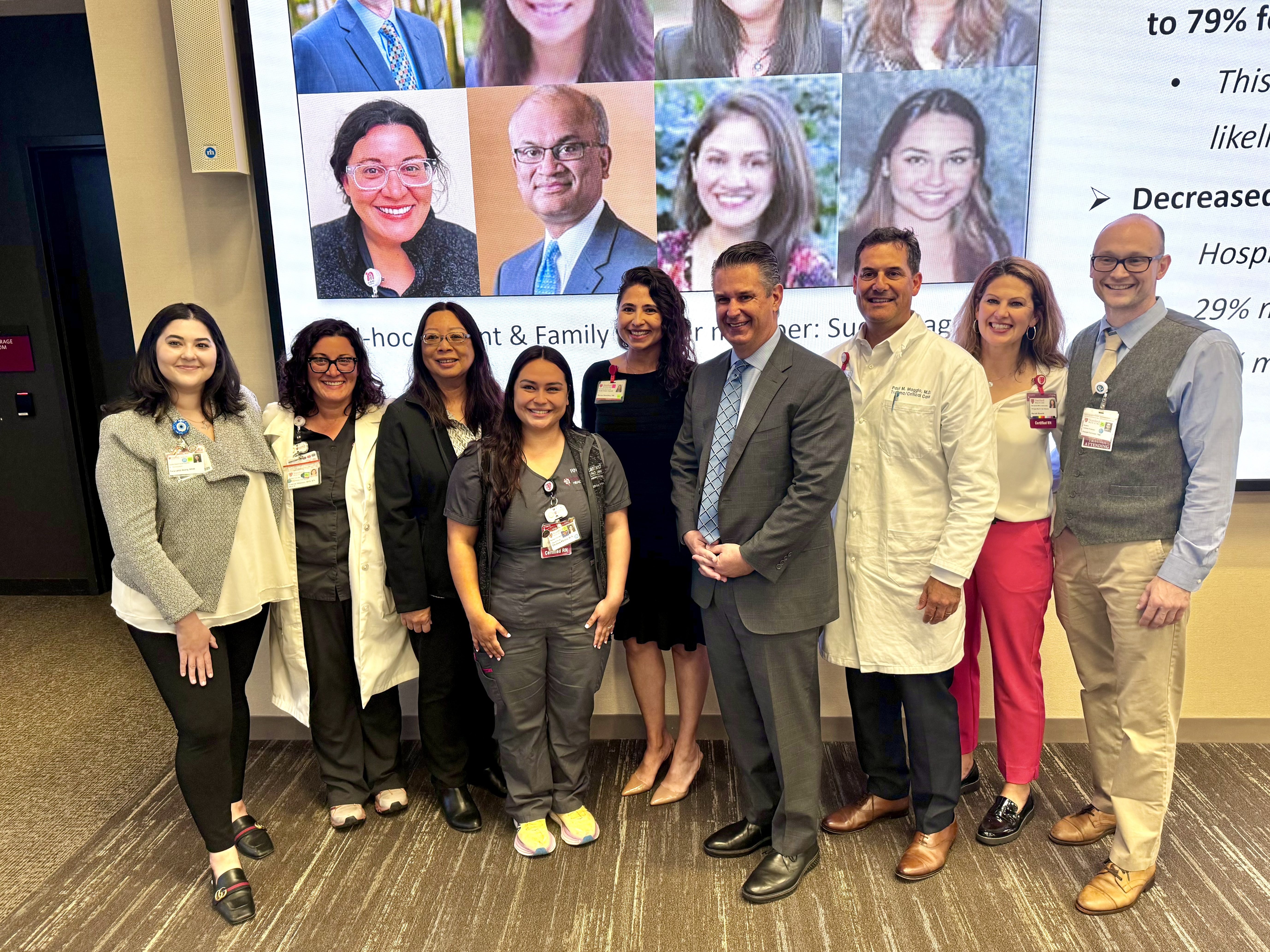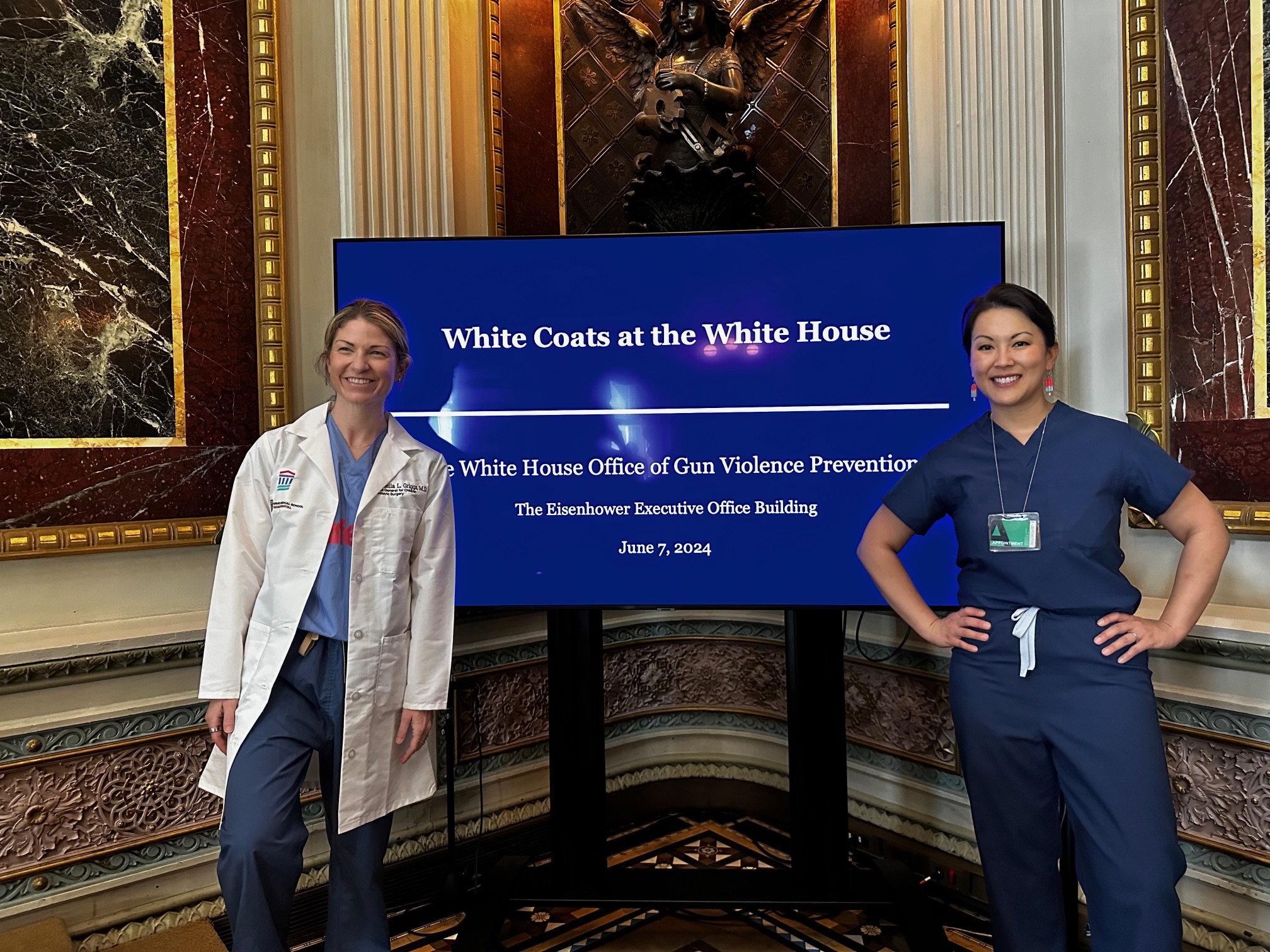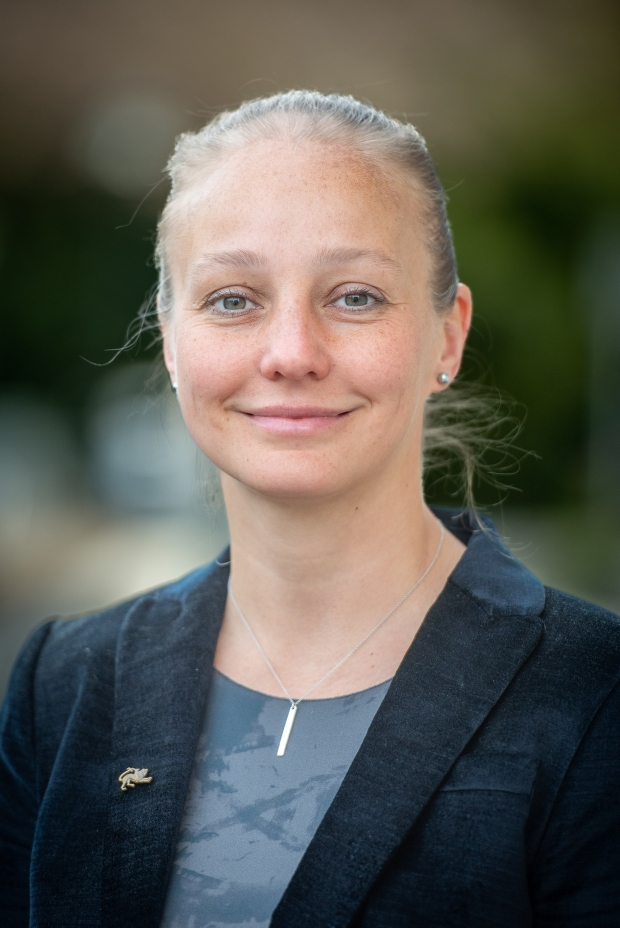Visiting Surgeons Introduced to Omental Breast Reconstruction
June 4, 2024
Stanford Surgery welcomed seven visiting surgeons to learn about our innovative omental breast reconstruction technique. Visitors hailed from New York, Delaware, Pittsburgh, San Francisco, and London. Additionally, two surgeons from Ethiopia—who were visiting Stanford as part of a different program—also joined for part of the day
“[The visiting surgeons] observed a surgery, met some of our treated patients, and had thoughtful, engaging discussions with our team over meals,” said Dr. Dung Nguyen, the plastic and reconstructive surgeon on the team. “Most excitingly, they are motivated to offer this reconstruction to their patients!”
In addition to Nguyen, Stanford’s Omental Breast Reconstruction Team includes Drs. Irene Wapnir, a surgical oncologist specializing in breast; Monica Dua, an HPB specialist; and Yulia Zak, who specializes in bariatric and minimally-invasive surgery.
After receiving multiple requests from surgeons at various institutions to observe and learn the new technique, the team developed a one-day group intensive program. Visiting surgeons will had the opportunity to attend pre-operative conferences, observe surgeries, and meet some of the patients who have undergone treatment. Funding for the program was supplemented by the Department of Surgery, Division of Plastic & Reconstructive Surgery, and Division of General Surgery.
The team developed the new treatment back in 2019 after a mastectomy patient realized her low BMI would exclude her from traditional breast reconstruction techniques. During this novel type of breast reconstruction, the surgeons work simulateanously to remove the omentum laparoscopically, fat from the thighs and flanks is harvested using liposuction, and the mastectomy is performed. An ADM (acellular dermal matrices) pocket is contoured around a breast sizer into which the omentum is placed. Then the fat is injected into the omentum.
Tips for Surgeons Interested in Organizing a Similar Program
- Select a Topic of Shared Interest: Choose a subject that is relevant and beneficial to a small group of surgeons. This could be a new surgical technique, a collaborative project, or a specialized treatment approach.
- Assign an Objective to the Program: Clearly define the program’s goal, such as teaching a new surgical technique, fostering collaboration on an innovative project, or sharing best practices.
- Coordinate Logistics with Administration: Collaborate with administrative staff to organize the location, schedule, and necessary resources. This includes securing operating rooms, conference spaces, and accommodations for visiting surgeons.
- Seek Funding Support: Identify potential sources of funding to cover the costs of the program. This could include institutional grants, industry sponsorships, or educational funds.
Watch HPB Surgeon Dr. Monica Dua and Plastic and Reconstructive Surgeon Dr. Dung Nguyen present "Omental Fat-Augmented Free Flap (O-FAFF) for Breast Reconstruction" on YouTube.
Media Contact

Bio
About Stanford Surgery
The Stanford University Department of Surgery is dedicated to inventing the future of surgical care through:
• pioneering cutting-edge research,
• developing the next generation of leaders, and
• healing through incomparable surgical skills and compassion.
To learn more, please visit surgery.stanford.edu
The Latest
- Surgery
Dr. Mueller Named Chair of CPMC Peds Department
Dr. Claudia Mueller has been named Chair of the Department of Pediatrics at California Pacific Medical Center (CPMC).
- Division of Plastic & Reconstructive Surgery
Threads of Unity: A Craniofacial Picnic Annual Tradition
On Sunday, June 2, 2024, the 7th Annual Craniofacial Family Picnic for patients of the Lucile Packard Children's Hospital Cleft and Craniofacial Center and their families took place, sponsored by the lab of Dr. Derrick Wan and the Creating Smiles fund.
- Surgery
World Surgery Journal Announces Dr. Wren is new EIC
World Surgery Journal announced yesterday that Dr. Sherry Wren has accepted the position as Editor-in-Chief. World Surgery Journal is the official journal of the International Society of Surgery (ISS), aka the Societe Internationale de Chirurgie (SIC).
- Surgery
Dossabhoy et al Receive SHC QPI Award
The project “Reducing Hospital Length of Stay after Carotid Endarterectomy and Endovascular Aneurysm Repair has been selected as the inaugural winner of Stanford Health Care's Quality & Performance Improvement (QPI) Award.
- Division of Plastic & Reconstructive Surgery
Dr. Sheckter Receives ABA Peter Brigham Award
Dr. Clifford Sheckter received the Peter Brigham Award at the American Burn Association (ABA) Annual Meeting which took place April 9-12, 2024 in Chicago, IL. He won the award for his work on Home Oxygen Therapy, a treatment that provides additional oxygen to individuals recovering from burn injuries.
- Surgery
First Global Grand Rounds Speaker: Dr. Kristin L. Long
On May 7th, Global Engagement hosted Dr. Kristin L. Long, the 2024 Society of University Surgeons (SUS) Global Surgery Scholarship awardee who delivered a talk entitled “Turbulence: Bumps in the Road of Hybrid Global Surgery Efforts.”
- Surgery
Dr. Chao Attends White Coats at the White House
Dr. Stephanie Chao, an associate professor in the Division of Pediatric Surgery attended the White Coats at the White House event and spoke about gun violence prevention on Friday, June 7.
- Division of Plastic & Reconstructive Surgery
Dr. Jill Helms Honored with 2024 Faculty Women’s Forum Outstanding Mentor Award
Dr. Jill Helms has been selected as a recipient of the 2024 Faculty Women’s Forum (FWF) Outstanding Mentor Award.
- Surgery
Training Day: Staff Strengthen and Acquire Skills at PD Retreat
Stanford Surgery Staff attended a professional development retreat on Monday, June 3.
- Surgery
Dr. Kircher Receives Extension Funding from Biodesign
Dr. Varia Kirchner has received additional support through the Biodesign Faculty Fellowship Extension Funding Program for her project "Rehabilitation of DCD Livers Ex Vivo.”



.jpeg)




